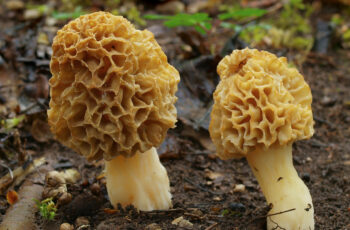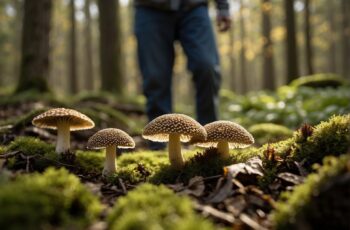Venturing into the woods in search of mushrooms is an age-old practice that combines the thrill of the hunt with the pleasure of a forest walk. It’s an activity where you, the enthusiast, can engage with nature, learn about different fungi, and perhaps even gather ingredients for a delicious meal. The quarry of mushroom hunters varies widely, but among the most sought-after is the elusive morel mushroom, prized for its unique flavor and spongy texture.
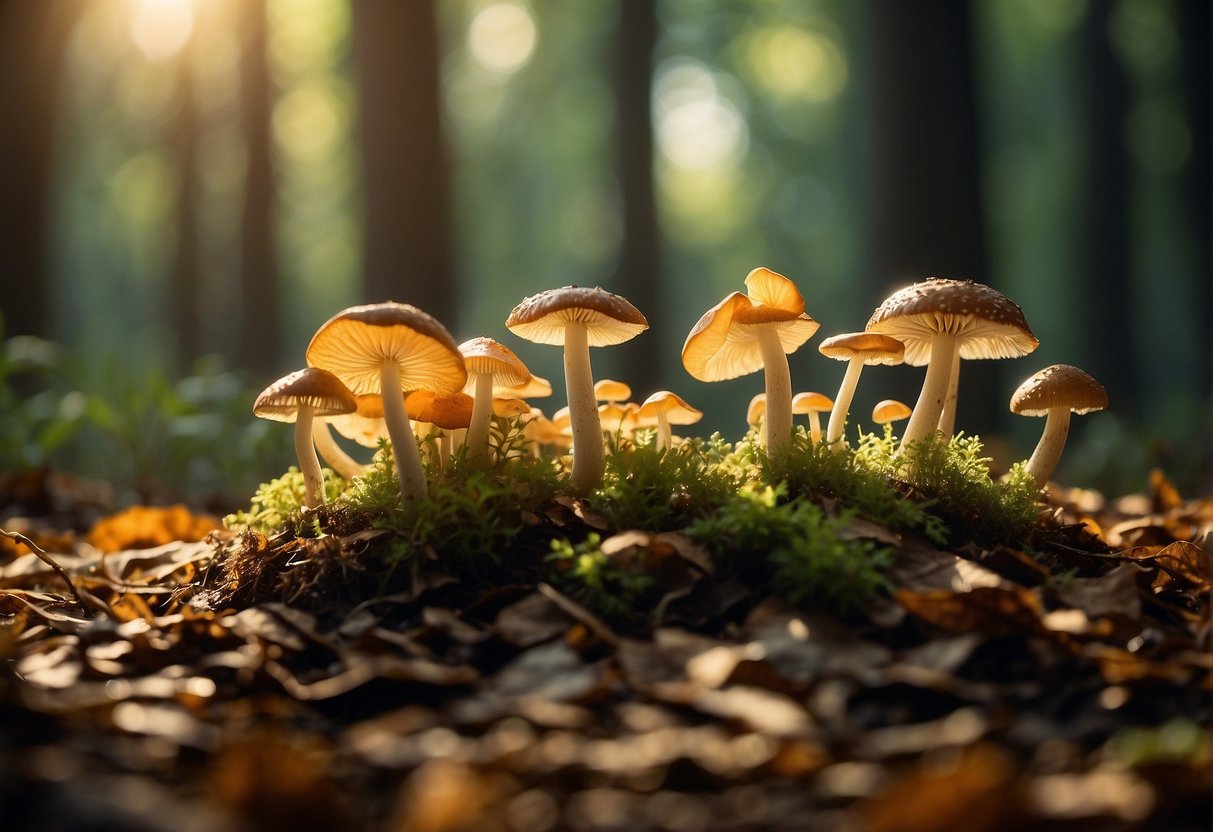
When you embark on mushroom hunting, you’re not just finding fungi; you’re participating in a tradition that requires skill and knowledge. You need to identify not only the different types of mushrooms but also their habitats and the seasons they grow in. More importantly, you must be able to distinguish between edible species and their toxic look-alikes. Mushroom hunting is a rewarding pursuit, providing both a connection to the environment and a tangible reward for your efforts.
While mushrooms can be found throughout various seasons, the morel mushroom emerges as a coveted treasure in the spring. Knowing when to go mushroom hunting is crucial; the best yields often follow damp, spring weather. As you walk through the forest, keep your eyes peeled for the distinctive honeycomb pattern of morels. Remember, mushroom hunting is not just about what you find, but how you find it, fostering a sustainable approach to ensure these natural resources continue to thrive for future generations of foragers.
Fundamentals of Mushroom Hunting
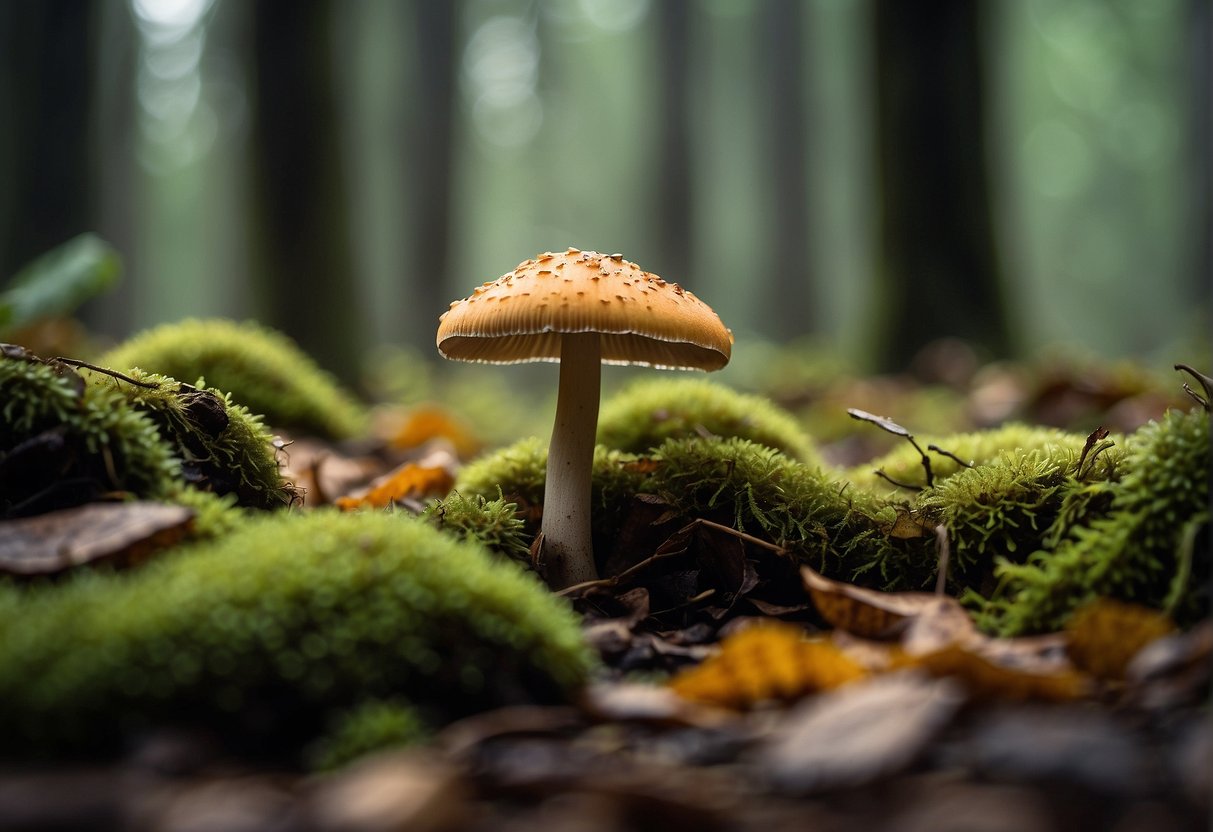
Mushroom hunting blends the thrill of the hunt with the joys of being close to nature. Understanding the ecosystem and knowing the best times and seasons are crucial for a fruitful foraging experience.
Understanding the Ecosystem
The key to successful mushroom hunting is a deep appreciation for the ecosystems where fungi flourish. Wild mushrooms thrive in environments that balance moisture and soil temperature—two critical factors that contribute to their growth. Your quest begins with researching local habitats, such as woodlands, meadows, or river valleys, where certain mushroom species are known to grow. Be attentive to the soil characteristics of these areas, as some mushrooms prefer rich, damp earth, while others may favor sandy or loamy ground.
Best Times and Seasons for Hunting
Wild mushrooms have their preferences when it comes to weather and temperature, with many favoring the conditions of spring. The moist soil after a rain combined with warmer soil temperatures creates an ideal environment for mushrooms to emerge. Foraging during the tail end of rain showers can often yield a bountiful harvest, but be sure to arm yourself with a guide to identify edible species correctly. Each season has its stars; morels herald the start of spring, while chanterelles brighten summer forests, and porcinis round out the fall.
Identifying and Locating Morels
When you set out to hunt for morels, two things are critical: knowing what you’re looking for and understanding where to look. Let’s dive into the key characteristics of morels and the best locations to find them.
Characteristics of Morel Mushrooms
Morels are distinctive mushrooms that bear a unique honeycomb appearance on their caps. You’ll notice elongated pits and ridges in a network design, setting them apart from other mushrooms. Their color ranges from tan to dark brown, though they can vary depending on the type. A true morel will also have a hollow stem and cap, a vital identifier when distinguishing from false morels, which can be toxic.
- Cap: Conical, with a honeycomb texture.
- Color: Ranges from light yellow to dark brown.
- Stem: Hollow, usually white to pale yellow.
- Height: Usually 2 to 4 inches, but can vary.
Engaging in mushroom hunting requires a clear understanding of these characteristics to ensure safe and successful foraging.
Ideal Hunting Locations
Searching for morels can feel like a treasure hunt, and knowing the ideal spots will give you a clear advantage. Morels have a symbiotic relationship with certain tree species, often found in proximity to elm, ash, and oak trees. Look for these trees in your hunting grounds:
- Elm Trees: Often a prime spot, particularly if the tree is dead or dying, as the roots still provide nutrients favorable for morels.
- Ash and Oak Trees: Living trees can also be fruitful hunting areas, as morels enjoy the leaf litter and soil composition these trees provide.
Besides tree types, consider the terrain. Morels thrive on south-facing slopes early in the season because these spots get more sunlight, warming the soil. Later on, you can find morels on shadier slopes as well. Another tip is to explore burn sites, especially a year after a forest fire, as morels are known to proliferate in these nutrient-rich areas.
| Key Terrains for Morels | Description |
|---|---|
| South-Facing Slopes | Warmer, early-season spots. |
| Forest Floors Near Specific Trees | Fallen leaf debris offers an ideal habitat. |
| Burn Sites | Nutrient-rich, favorable for post-fire growth. |
Keep an eye on the forest floor and be prepared to gently move aside leaf litter as morels can often be partially hidden. Remember, patience is crucial in mushroom hunting. With these identifying characteristics and location tips, you’re well on your way to finding morels in the forest. Happy foraging!
Harvesting Techniques and Safety
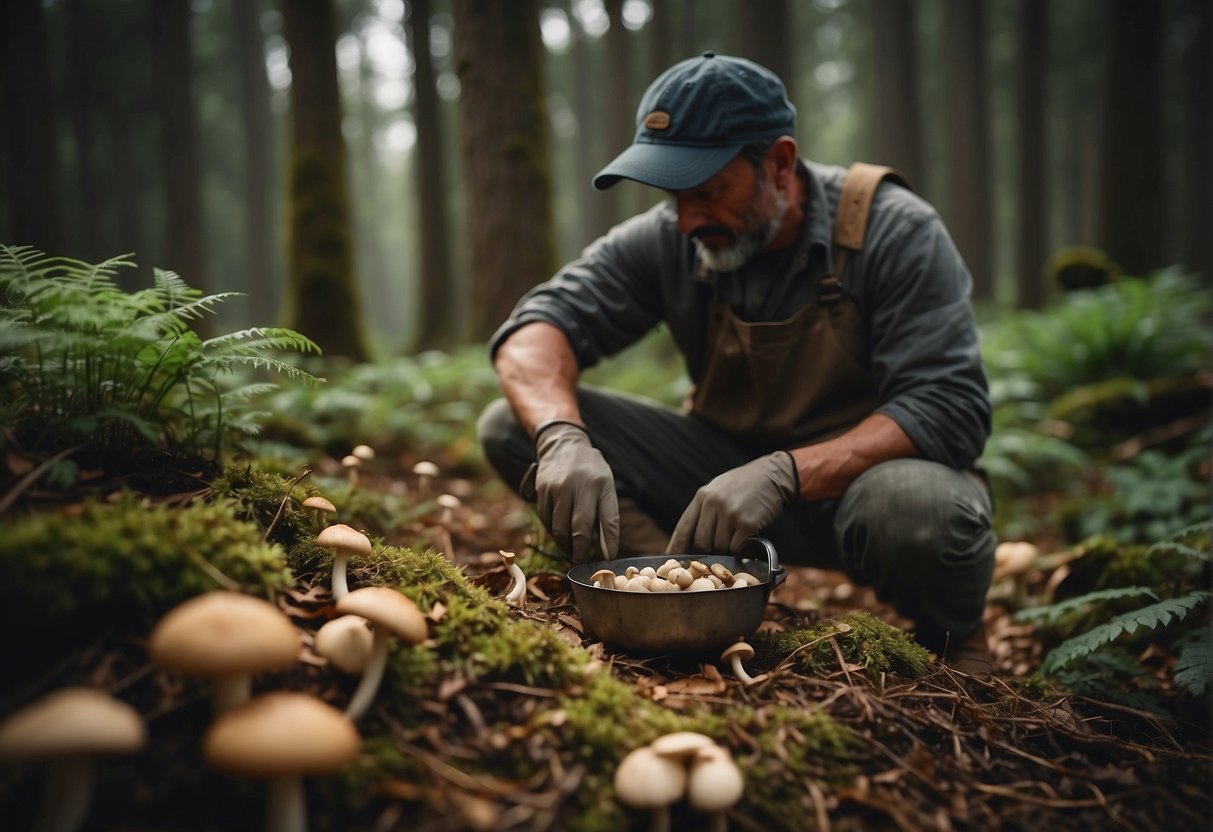
Before venturing into the woods, familiarize yourself with the proper ways to harvest mushrooms and the importance of distinguishing between safe and poisonous varieties. Knowledge and preparation are your best tools.
Proper Collection Methods
When you’re ready to begin, carry a basket to allow your finds to breathe, and bring along a sharp knife for cutting mushroom stems. Always cut the stem near the base, being careful not to disturb the surrounding mycelium which is crucial for future growth. Here’s a simple list to help you prepare:
- Basket: to hold your mushrooms and allow spores to disperse while you walk.
- Knife: for cutting stems cleanly.
- Mesh bags: to separate different types of mushrooms.
- Brush: to gently clean dirt off of your harvest.
- Map: as some mushrooms grow in specific geographic locations.
Twist and pull techniques, like those used for Shiitake mushrooms, allow for a clean removal from the substrate. Harvest before the caps unfurl for optimal freshness and reduced spoilage.
Avoiding Poisonous Varieties
Your safety could depend on the ability to accurately identify mushrooms. False morels, like the Gyromitra species, can be toxic and are sometimes mistaken for edible varieties. Here are a few tips for keeping safe:
-
Strict Identification: Always confirm the identity of the mushrooms with a credible field guide or local expert.
-
Knowledge is Power: Increase your knowledge through reputable foraging courses or workshops.
-
Permits: Know and adhere to local regulations; some areas may require permits to forage.
When it comes to false morels, err on the side of caution. Consumption of these can lead to severe illness or worse. If in doubt, leave the mushroom where it is. Remember, no mushroom is worth risking your health.
Post-Hunting: Preparing and Enjoying Your Bounty
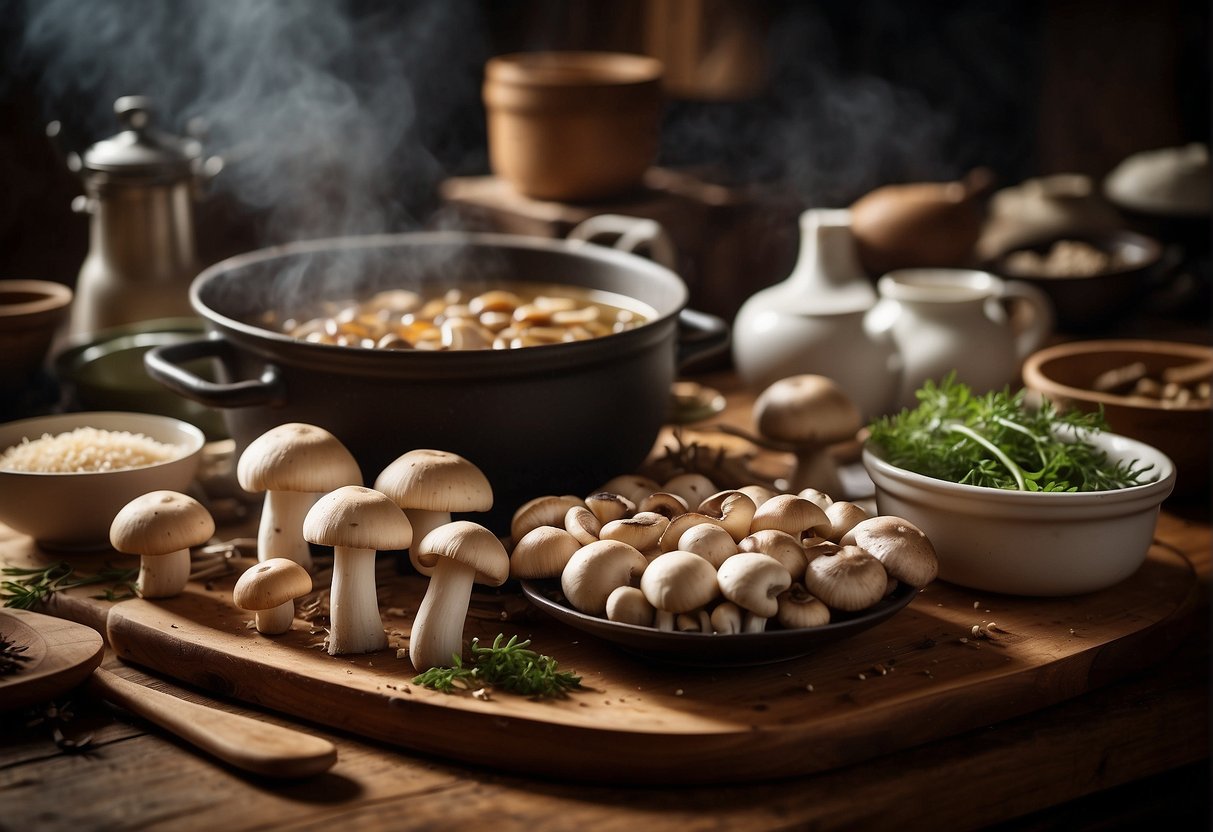
After a successful hunting trip, you now have the enviable task of transforming your morels into delectable dishes. Here’s how to clean, cook, store, and share your morel mushrooms, ensuring they’re enjoyed to their fullest.
Cleaning and Cooking Morels
Cleaning Morels:
- Gently remove debris by brushing the morels with a soft brush or damp cloth.
- If needed, rinse them quickly under cool water but don’t soak; morels are like sponges.
Cooking Morels:
- Sautéing in Butter: For a delicious treat, sauté your morels in butter over medium heat until they’re golden brown. The rich flavor of the mushrooms is excellent when combined with the creamy notes of the butter.
- Frying: If you favor a crispier texture, coat the morels in flour and fry until they’re a delightful golden brown. This method heightens their earthy flavor, making for a satisfying crunch.
Storing and Sharing the Harvest
- Short-Term: Place morels in a paper bag within the refrigerator; they can last up to a week.
- Long-Term: For extended storage, morels can be dried and then rehydrated when ready to use.
Sharing:
- Community: Share your bounty with fellow fungi enthusiasts or prepare a meal for friends to showcase the unique flavor of your collected morels.
- Recipes: Exchange recipes that highlight the morels’ distinct taste, bringing the joy of your mushroom hunting to others’ tables.

